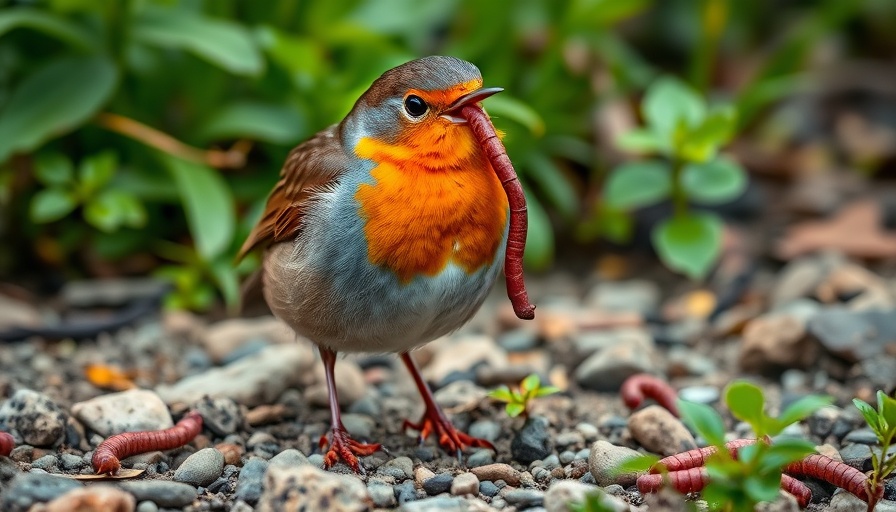
Understanding the Historic Connection Between Robins and Earthworms
For many, the image of a robin tugging an earthworm from the soil has become a quintessential symbol of spring, emerging each year as a herald of warmer days. However, the relationship between these birds and their wriggly meal is marked by a rich and somewhat surprising history.
The Era of Glacial Changes
Approximately 20,000 years ago, glaciers advanced deep into what we now call the U.S., drastically reshaping the landscape and its ecosystems. This glacial retreat left a barren land, stripping away native earthworm populations except in southern states. So, when robins are seen foraging for earthworms today, they are likely munching on a species that arrived much later, carried over by European settlers in soil or ship ballast.
The Robins’ Adaptability
Interestingly, before earthworms became a staple in the robin's diet, they fed their chicks on a diverse menu of insects, berries, and other invertebrates. This adaptability has allowed robins to thrive in a variety of environments, showcasing their resilience long before humanity's influence paved the way for new food sources.
Picturing a Prehistoric Landscape
It's fascinating to consider how prehistoric landscapes shaped the behaviors of today’s robins. With evidence suggesting that giant mammals like bison, horses, and woolly mammoths grazed the grasslands, robins likely found ideal conditions for feeding. These dense grazing patterns maintained short grasses, perfect for foraging without the threat of predators.
Putting It All Together
This relationship between robins and earthworms exemplifies how species adapt and pivot as their environments evolve. The robin's singing in our backyards today echoes a narrative of survival and adaptation, whispering stories that tie back to the ancient earth beneath our feet. As we observe robins hop along our lawns, it’s a reminder of the subtle yet profound impact of nature’s history on our contemporary wildlife.
Explore the stories around you and share your encounters with nature through platforms like BirdNote! It's a beautiful way to connect our present with the past.
 Add Row
Add Row  Add
Add 




Write A Comment